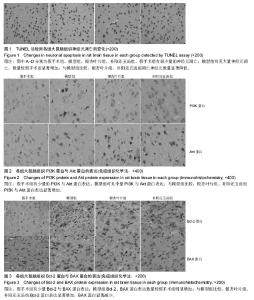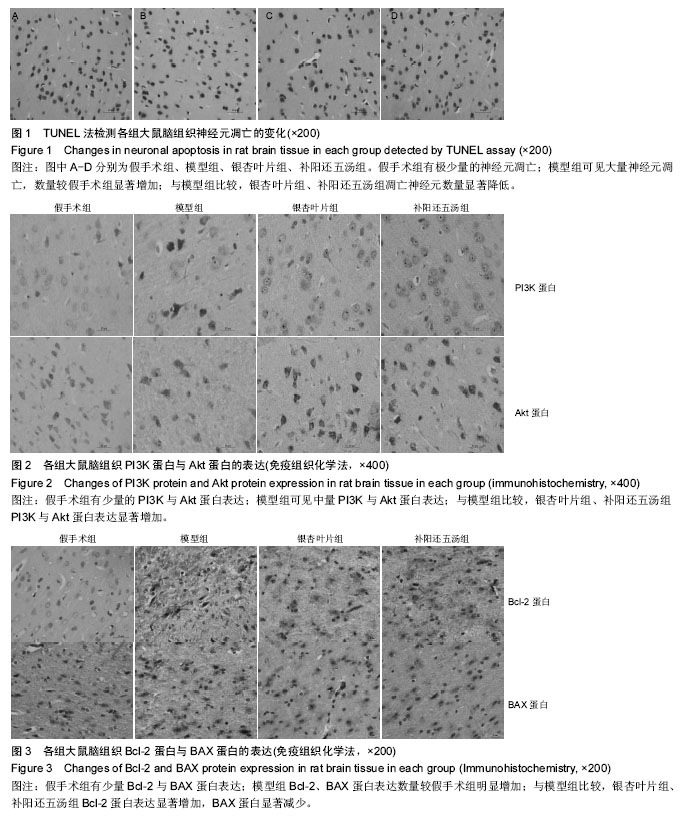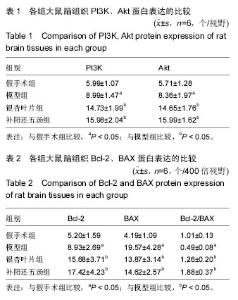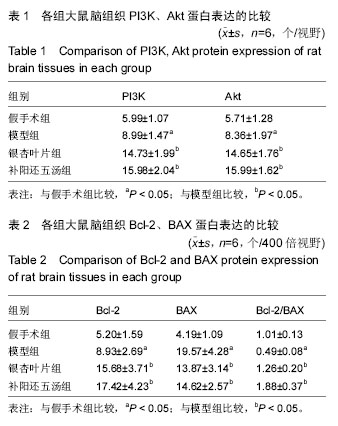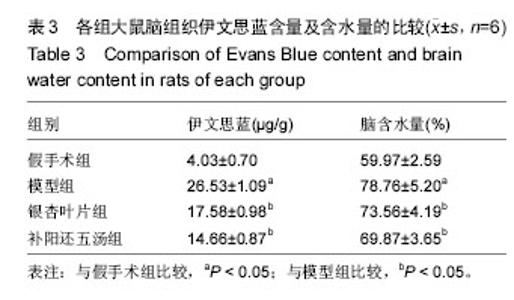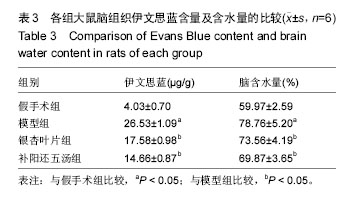| [1] 谢飞,魏珂,闵苏,等.神经生长因子对H9c2心肌细胞缺氧/复氧后凋亡的保护作用及其机制[J].中国药理学通报, 2014,30(4):506-510.
[2] Li Q,Huai L,Zhang C,et al.Icaritin induces AML cell apoptosis via the MAPK/ERK and PI3K/AKT signal pathways.Int J Hematol.2013;97(5):617-623.
[3] Qiao LY,Yu SJ,Kay JC,et al.In vivo regulation of brain-derived neurotrophic factor in dorsal root ganglia is mediated by nerve growth factor-triggered Akt activation during cystitis.PLoS One.2013;8(11):e81547.
[4] 张蔺珊,李娟娟,吴春云.脑缺血的损伤机制及相关信号通路的研究进展[J].神经解剖学杂志,2014,30(6):729-732.
[5] Wu X,Li Y,Liu H,et al.Microvessel changes in the gerbil hippocampus after cerebral ischemia and reperfusion by Buyang Huanwu decoction pretreatment.Neral Regen Res.2011;6(9):656-660.
[6] 吴晓光,李强,郭园园,等.补阳还五汤预处理对缺血再灌注损伤沙鼠脑组织血流量的影响[J].承德医学院学报,2011, 28(2):115-117.
[7] Lee JH,Cui HS,Shin SK,et al.Effect of propofol post-treatment on blood-brain barrier integrity and cerebral edema after transient cerebral ischemia in rats.Neurochem Res. 2013;38(11):2276-2286.
[8] Lu H,Lei XY,Hu H,et al.Relationship between AQP4 expression and structural damage to the blood-brain barrier at early stages of traumatic brain injury in rats.Chin Med J (Engl).2013;126(22):4316-4321.
[9] 赵蕾,张晓红,吴晓光,等.山楂叶总黄酮对脑缺血大鼠脑组织PI3K/Akt信号通路的影响[J]. 广东医学,2014,35(7): 982-984.
[10] 王暖,耿德勤,黄红莉,等.银杏叶提取物对阿尔茨海默病大鼠认知功能的影响及其作用机制[J].神经损伤与功能重建,2012,7(4):263-268.
[11] 黄雄峰,汪建民.葛根素的神经保护作用机制研究进展[J].中国实验方剂学杂志,2015,21(4):224-230.
[12] 王小雄,司瑞,邵虹,等.红景天苷抑制缺血/再灌注诱导的心肌微血管内皮细胞凋亡[J].中国心血管杂志, 2015, 20(1): 57-61.
[13] 秦宝宁,滕文静,刘瑞娟,等.大黄虫丸对慢性粒细胞白血病K562细胞增殖凋亡及PI3K/AKT信号传导通路的影响[J].时珍国医国药,2015,26(3):522-525.
[14] 赵泓翔,郭可,崔亚迪,等.半枝莲黄酮对复合Aβ-(25-35)引起线粒体膜Bcl-2、BAX、BCL-XL及BAK异常的干预作用[J].中国病理生理杂志,2014,30(12):2262-2266.
[15] 马娜,郭瑞珍,阮媛,等. PI3K-AKT-Bcl-2抗凋亡途径与瘢痕癌癌细胞凋亡相关性探讨[J].中华肿瘤防治杂志, 2014, 21(8):599-604. |
